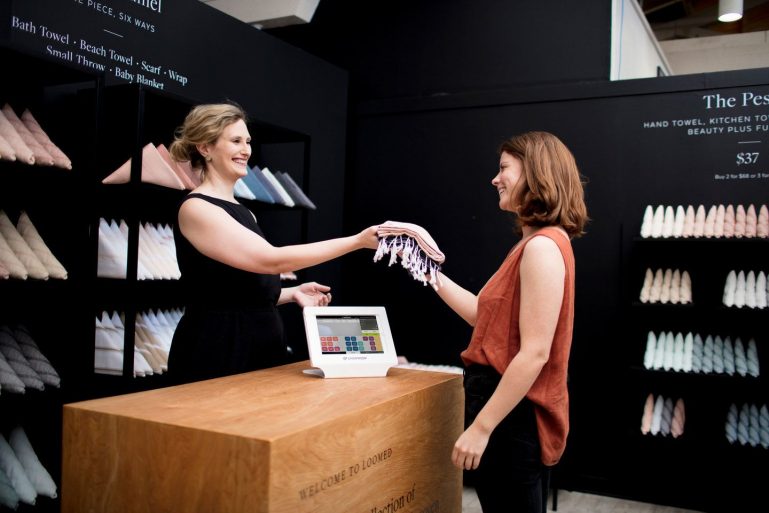
How to Run a Profitable Business, (Minus the Costly Mistakes)
Let’s be honest. There’s no easy way to run a business. If it were easy, everybody would do it.
However, there are strategic ways to go about business planning that will simplify the process of running a profitable business without all of the expensive mistakes.
There are few strategies business owners can implement that can mean the difference between a thriving business and one that is merely trying to survive. Luckily for you, through our extensive research, we have uncovered three proven, game-changing factors that help business owners just like you drive revenue.
Minimum Viable Product (MVP)
The first version of Google’s Gmail was written in a day. It wasn’t a version with all the amazing filters and intelligent usability we expect from it today. It was simply good enough to let the people making it measure the demand for a better email system. Gmail isn’t the only product that started with a Minimum Viable Product (MVP). Here are ten other Massively Successful Minimum Viable Products that you’ve probably heard of before.
In the technology startup world, an MVP refers to a new product with a limited feature set that provides ‘just-enough’ functionality to enable the developer to test the market with their new ideas. In retail, the same principle can be applied.
For example, if you own a cafe or food truck and want to test out a new specialty drink or amazing dessert-based empanada recipe, you can generate a buzz about your latest and greatest through social media, your website, and even old-fashioned blackboard signage. Promote it as a limited time item, buy enough ingredients for a set amount and see how well it does. If you sell out and the demand outweighs your supply, then you definitely have a winning product on your hands! Don’t worry, if you don’t sell out, but generate some buzz and interest, keep it going and see how that translates into actual sales.
The same approach can be applied to retail stores. If you own a retail shop and you want to test the market’s interest in a new clothing line, you can promote it through the same social channels, website, and in-store awareness methods. Get a few samples (or discount) from your vendor in the most common sizes and see how quickly it sells. If it flies off the racks, it’s safe to say you can place your first order. If it sits there through next season, you can toss it on the discount rack and chalk it up to a lesson learned.
Whether you are just starting out in retail, or are a veteran that wants to make some changes to your existing business, implementing an MVP approach minimizes your risks. For example: If you want to introduce a new product in your business, don’t go out and spend thousands of dollars on new inventory. Instead, talk to your vendors and see if you can receive a few samples and test the waters by seeing how they sell before committing to a large order.

Eliminate Waste
This is one of the fundamentals of learning how to run a profitable business and the foundation of becoming a lean retailer — which you will learn more about in the next section.
Think of it as a minimalistic approach to your business and an extension of the minimum viable product principle. Anything in your business that does not add value, or is not a catalyst for your bottom line, probably doesn’t need to be there in the first place. Waste can be anything from wasted square footage in your brick-and-mortar store to underutilizing your employees’ abilities, to having too much inventory on hand. All of these will have a negative impact, either directly or indirectly, on your bottom line.
So while we have you thinking about it, take out a pen and paper (or your phone) and make a list of the things that do not contribute directly to your revenue or are underutilized. Three to five items is a good starting point. Once you have your list, think about how you can cut back or extract more value from each component.
SEE ALSO: How to Run a Business in Today’s Competitive Market
Listen to your Customers
Your customers are the bread and butter of your business and play a huge role in driving profits and sales. Without your customers, there would be no business to operate. You don’t want to travel down the Field of Dreams road and expect that, “if you build it, they will come.” This is not a Hollywood blockbuster, and your customers are not actors. Your customers are real people who know what they want, and if they can’t get it from you, they will find it somewhere else.
Unless your product is truly unique or industry-changing, there is a good chance someone has done it before. However, nobody has done it quite like you. If you listen carefully to the demands of your customers by engaging them in conversation, observing their behavior in-store, or even through accidental eavesdropping, you should be able to gain better insight into what they want.
Also, don’t be afraid to take a more formal approach to understanding your customers wants. Classic methods such as a customer survey are always a good way to help identify what customers like and dislike about your business, as well as what drives them to shop there. With tools such as Survey Monkey, you can create and distribute surveys with ease and make smarter decisions based on the response data.
Once you’ve collected the insights, either formally or informally, it’s up to you to repurpose that information and turn it into actionable items that will improve customer satisfaction, improve retention, and help drive new business. Take a look at 15 Retail Customer Retention Tactics for Brick-and-Mortar for some other ideas on customer retention.

What is a Lean Business
Now that you know 3 proven methods for saving money and raising profits, you are well on your way to knowing how to run a profitable and lean business. But what exactly is a lean business? As previously mentioned, the underlying ideology of a lean business is to maximize value and eliminate waste. A lean business means generating more value for your customers with fewer resources. Kind of sounds like a catch 22, but trust us, it can be done — and it can be done effectively.
Benefits of Running a Lean Business
Regardless of the industry you are in, there are many advantages to implementing a lean business strategy. Since we could get carried away, here are just our top 3.
- Efficiency. Eliminating waste and unnecessary elements, will by default make your business more efficient. There will be fewer factors and puzzle pieces to exchange hands between internal and external agents. This will result in a more efficient business process and could be anything from automating your marketing efforts to electronic invoicing.
- Reduction of cost. Creating a more efficient business will lower costs. This could be operational costs, labor costs, or even product costs, depending on how you apply the strategy. By removing inefficiencies, you will ultimately see the positive effect it has on your bottom line.
- Agility. Lean businesses are often more nimble and can quickly adapt to changes because there are fewer obstacles of ‘waste’ in their way.
Potential Pitfalls
While many common mistakes can derail the success of your business, the biggest potential pitfall for operating a profitable business and implementing a lean strategy, is thinking once you’ve achieved your goals, all the hard work is done, and you can enjoy the ride on cruise control. So before you even let that thought enter your head, we want to say, “STOP!” Don’t go any further and don’t get caught up in a daydream about how great it would be if your business could run on autopilot. The reality of that happening is pretty slim, even for the most successful or companies. Apple didn’t just create the first iPhone a decade ago and stop there. They kept innovating and refining to create products consumers not only wanted but didn’t know they needed.
A lean business is similar. It is a continuous process. There is always something that can be refined, reworked or executed in a more productive manner that will net the best possible results.
Getting stuck on cruise control can be an easy trap to fall into, but it will have some serious adverse effects on the long-term success of your business. According to the Small Business Administration (SBA) 2016 statistics, almost 80 percent of small business startups survive the first year, and only about half of those survive five years or more.
How to Get Started
The transition from understanding something in theory to making it happen in practice can be a difficult one. Just like any other business strategy, there are benefits to implementing such an approach.
When you first begin, it’s easy to feel compelled to start measuring every aspect of your business — from inventory management to store layout, from staff schedules to marketing efforts.
Lean retail isn’t supposed to be an additional burden to an already busy schedule. It’s a way of getting more out of your time by avoiding wasted effort. Choose the areas of your business (marketing, sales, inventory, finances) that you believe could most benefit and start there. As a rule of thumb, two trials a week is plenty to get you started.
When in doubt, simplify. Making small changes can sum up to a big difference in your business. Instead of reworking the whole layout of your store, think about changing some of the key elements that your customers see as they walk through your doors.
Learning how to run a profitable business is an evolving process because there will always be obstacles or bumps in the road that are beyond your control, so you will need to adapt and adjust accordingly. The trick is to start slow and keep it simple. By doing this, you’ll learn what works for your business and how small steps can lead to enormous profit.
Want to try ShopKeep for yourself?
Just answer a few easy questions.
Need help finding the right point of sale?
Just complete the form. We’ll call you right back to explain how ShopKeep can work for you.
Hit the ground running.Sprinting, in fact!
Read our free, comprehensive guide, Small Business 101, to learn all you need to know about starting a thriving business.

